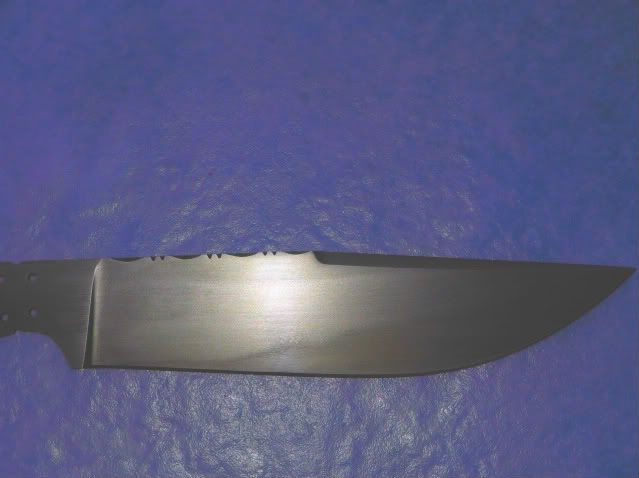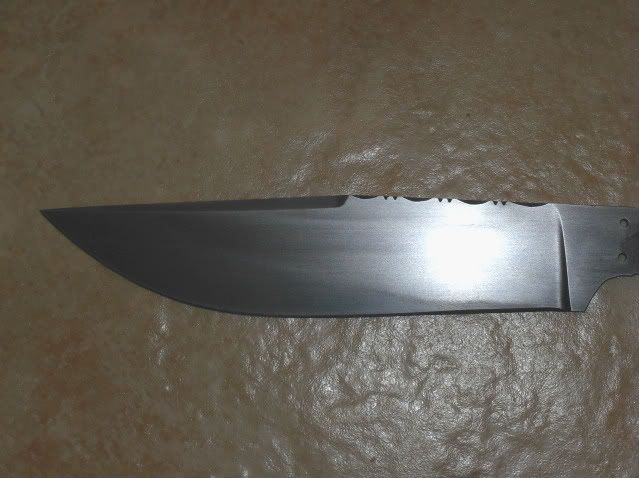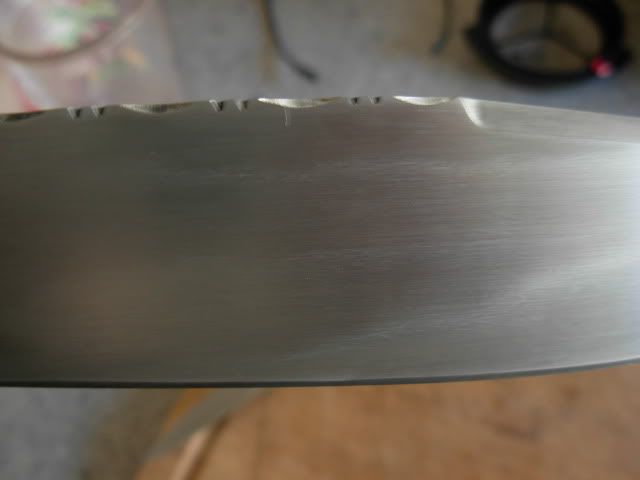Josh Dabney
Moderator
Here's my situation. I am a newb, but one who's serious about making the best knife I can make. I've got some 1095 CRA on the way from Admiral. I've got my evenheat up and running so accurate temps aren't a problem.
I've done all the forum research I can do. I've read, re-read, and re-re-read Kevin Cashens stickies at BF concerning Quenching and Hypereutectoid steels and have made up my "proposed" HT Recipe based on my conclusions from the research I've done.
I'll include my thoughts on some aspects to explain the reasoning for my choices. Every word and detail is welcome to scrutiny and correction if in error.
I am aware that HT is a largly personal thing and success is generally a measurement relative to the user of the end product. Realizing this I understand that having a recipe is a begining not an end to the creation of the best blade I can make but we've all got to start somewhere right.
Begining with 1095 CRA barstock from Admiral steel
1. Cut, profile, rough grind
2. Normalize ( to refine grain and relieve stress)
-Heat at 1475* and air cool to magnetic
-Heat to 1375* and air cool to magnetic
-Heat to 1275* and air cool to magnetic (Are these temps good ?)
3. Harden Place blade in oven at 1275* and bring to 1475* soak 10 min
-Soak time to evenly distribute carbon, not just get it into solution
4. Quench (and agitate) for 10 seconds, remove, straighten, air cool to ambient. Got Canola oil now but hope to get McMaster Carr 11 second before using the 1095.
5. Temper kitchen oven 350* 1 hour.
6. Dry Ice cryo over night
- I am aware that cryo probably won't add any RC hardness or wear resistance to basic carbon steel but should aid in getting a complete, or more complete martensitic transformation and eliminate retained austintite. (It can't hurt right?)
7. Temper in Evenheat 400* 2 hours
8. finish grind, sharpen, test, finish knife or temper again +25* if edge chips
9. Smile, laugh, and live happily ever after.
This is where I'm at but do still have one question. Assuming I wanted a differential HT should I go with a softback draw or edge quench to achieve that ? Also at which point in the process to softback draw, before first temper,after first temper,or after cryo?
Again please feel free to tell me the errors of my thinking as this stuff is just a tad difficult to digest for a newb.
Thanks in advance to all who reply and my appologies for resurrecting this dead horse
-Josh
I've done all the forum research I can do. I've read, re-read, and re-re-read Kevin Cashens stickies at BF concerning Quenching and Hypereutectoid steels and have made up my "proposed" HT Recipe based on my conclusions from the research I've done.
I'll include my thoughts on some aspects to explain the reasoning for my choices. Every word and detail is welcome to scrutiny and correction if in error.
I am aware that HT is a largly personal thing and success is generally a measurement relative to the user of the end product. Realizing this I understand that having a recipe is a begining not an end to the creation of the best blade I can make but we've all got to start somewhere right.
Begining with 1095 CRA barstock from Admiral steel
1. Cut, profile, rough grind
2. Normalize ( to refine grain and relieve stress)
-Heat at 1475* and air cool to magnetic
-Heat to 1375* and air cool to magnetic
-Heat to 1275* and air cool to magnetic (Are these temps good ?)
3. Harden Place blade in oven at 1275* and bring to 1475* soak 10 min
-Soak time to evenly distribute carbon, not just get it into solution
4. Quench (and agitate) for 10 seconds, remove, straighten, air cool to ambient. Got Canola oil now but hope to get McMaster Carr 11 second before using the 1095.
5. Temper kitchen oven 350* 1 hour.
6. Dry Ice cryo over night
- I am aware that cryo probably won't add any RC hardness or wear resistance to basic carbon steel but should aid in getting a complete, or more complete martensitic transformation and eliminate retained austintite. (It can't hurt right?)
7. Temper in Evenheat 400* 2 hours
8. finish grind, sharpen, test, finish knife or temper again +25* if edge chips
9. Smile, laugh, and live happily ever after.
This is where I'm at but do still have one question. Assuming I wanted a differential HT should I go with a softback draw or edge quench to achieve that ? Also at which point in the process to softback draw, before first temper,after first temper,or after cryo?
Again please feel free to tell me the errors of my thinking as this stuff is just a tad difficult to digest for a newb.
Thanks in advance to all who reply and my appologies for resurrecting this dead horse
-Josh
Last edited:





